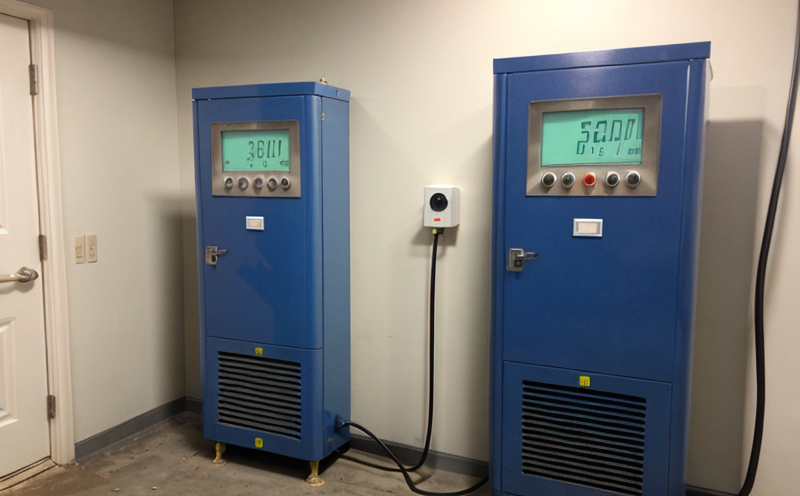BS EN 50543 Hydrogen Detection Systems Testing
The BS EN 50543 standard is a critical benchmark for ensuring the safety and reliability of hydrogen detection systems used in mining operations. This testing protocol is particularly important in environments where hydrocarbon gases, including methane and natural gas, are present. The standard specifies requirements for the design, construction, and performance testing of equipment intended to detect and monitor these hazardous substances.
The primary purpose of this test is to ensure that detection systems comply with stringent international safety standards. By adhering to BS EN 50543, manufacturers can provide assurance that their products will function reliably in challenging mining environments where even the slightest error could lead to catastrophic consequences. The testing process involves multiple stages, each designed to evaluate different aspects of the system's performance.
Key parameters tested under this standard include response time, repeatability, and accuracy at various concentrations of hydrogen gas. Additionally, the test evaluates the device’s ability to function in the presence of other gases commonly found in mining environments, such as methane and carbon dioxide. The testing procedure is rigorous; it involves exposing the detection system to a series of known gas concentrations while monitoring its performance against specified thresholds.
The BS EN 50543 standard also emphasizes the importance of robust design features that prevent false alarms or missed detections. This ensures that miners and safety personnel can rely on accurate readings when making critical decisions regarding ventilation and gas management in underground mines. The testing process is conducted under controlled conditions to simulate real-world scenarios, thereby providing a comprehensive assessment of system performance.
Compliance with this standard is mandatory for manufacturers aiming to market their hydrogen detection systems within the European Union and other regions that recognize it as an international benchmark. For quality managers and compliance officers responsible for ensuring adherence to safety protocols in mining operations, this testing service represents a crucial step towards maintaining operational safety.
- Why Choose This Test: Ensures compliance with international standards, enhances system reliability, and supports safer working environments.
- Comprehensive Evaluation: Rigorous testing of response time, repeatability, and accuracy in various gas concentrations.
Why It Matters
The importance of hydrogen detection systems cannot be overstated, especially within the mining sector. Hydrogen is a highly flammable gas that can ignite under certain conditions, posing significant risks to miners and operational safety. The BS EN 50543 standard plays a pivotal role in mitigating these hazards by mandating comprehensive testing of detection systems.
By ensuring that these systems meet the stringent requirements outlined in this standard, mining companies can significantly reduce the likelihood of accidents caused by undetected hydrogen leaks. This not only enhances operational safety but also aligns with broader corporate responsibility goals aimed at protecting lives and preserving environmental integrity. The testing process is designed to identify potential weaknesses or design flaws that could compromise system performance under real-world conditions.
The standard’s emphasis on repeatability ensures that detection systems provide consistent results, even in the presence of background gases common in mining environments. This consistency is crucial for maintaining accurate readings and preventing false alarms, which can lead to unnecessary evacuations or, worse, complacency regarding actual gas levels. The testing process also evaluates the system’s ability to respond quickly to changing conditions, ensuring that miners are alerted promptly when dangerous levels of hydrogen are detected.
The broader implications extend beyond individual mining operations; compliance with BS EN 50543 contributes to a safer industry as a whole by setting a high bar for safety standards. This collective effort helps establish trust among stakeholders and demonstrates commitment to operational excellence. For quality managers, compliance officers, R&D engineers, and procurement teams, ensuring that detection systems meet this standard is an essential part of their responsibilities in maintaining safe working environments.
Why Choose This Test
- Comprehensive Compliance: Ensures adherence to international safety standards, enhancing system reliability and operational safety.
- Rigorous Testing: Evaluates key parameters such as response time, repeatability, and accuracy in various gas concentrations.
- Real-World Simulations: Tests the system’s performance under controlled conditions that mimic real-world scenarios.
- Enhanced Trust: Demonstrates commitment to operational excellence and safety standards.
Use Cases and Application Examples
The BS EN 50543 standard is particularly applicable in environments where hydrogen detection systems are critical for maintaining safety. Underground mining operations, where the presence of flammable gases like hydrogen can lead to dangerous situations, stand as prime examples. The testing ensures that these systems operate reliably under conditions that may vary widely from one mine site to another.
During the testing process, systems are subjected to a range of gas concentrations and environmental factors typical of mining environments. This includes testing in the presence of other gases such as methane, carbon dioxide, and nitrogen, which can interfere with detection accuracy. The standard also evaluates the system’s ability to function effectively under varying temperature and humidity conditions.
- Use Cases: Underground mining operations where hydrogen is present in significant quantities or poses a risk due to its flammability.
- Application Examples: Detection systems installed in ventilation shafts, gas monitoring stations, and other critical areas within mines.





